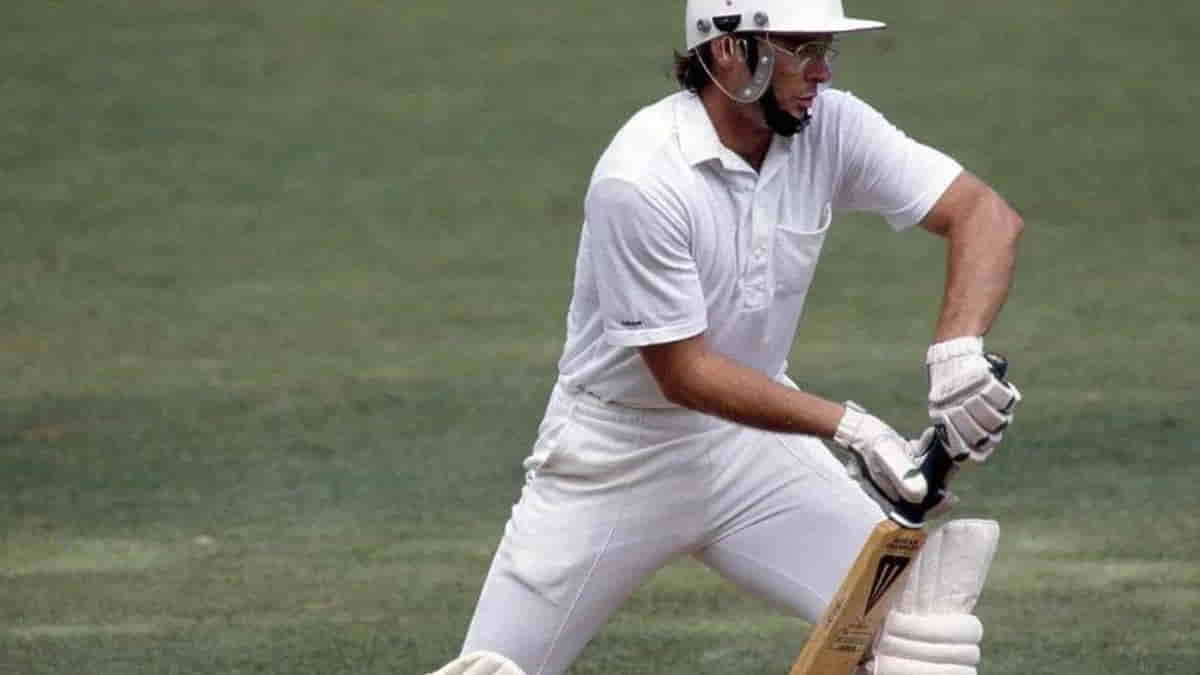 Source: getty images
Source: getty images
When asked how many runs have come off one over, most people think of Tilak Raj and Malcolm Nash, who both gave 36 to Ravi Shastri and Garry Sobers, respectively. Bert Vance, on the other hand, went for more than double that number in one of first-class cricket’s weirdest overs in February 1990.
The event occurred in Christchurch on the penultimate day of Wellington’s Shell Trophy match against Canterbury. It was Wellington’s final game of the season, and they needed to win to secure the championship. They declared their second innings on the penultimate morning, leaving Canterbury to chase 291 in 59 overs.
Canterbury lost early wickets, and as former New Zealand batsman and Wellington coach John Morrison recalls, they “put the shutters up very early in a run-chase that was very feasible, and we just couldn’t remove them in the normal way.”
Although Canterbury appeared to be on the verge of losing when they collapsed to 108 for 8, Lee Germon and Roger Ford put a halt to the rot and appeared to be settling for a draw.
Although Canterbury was eight wickets down when the penultimate over began, Germon, their wicketkeeper and no slacker with the bat, was still in and on strike. Morrison and Wellington’s captain-wicketkeeper, Erv McSweeney, devised a strategy, and Bert Vance, the New Zealand batsman who was nearing the end of his career and thus had no bowling numbers of note to worry about, decided to assist them.
The plan was to feed Canterbury enough runs to get them close enough to the target to risk their last two wickets going for glory. They started the over on 196 for 8, with Germon not out on 75.
Bert Vance then bowled a string of no-balls, and only one of his first 17 deliveries – the second – was legal. Full-toss after full-toss was launched down the track from two or three yards away – “Bert overdid it somewhat,” Morrison said – and each one cracked to the boundary past immobile fielders.
Germon hit his century off the sixth ball and finished the over with 70 runs, including eight sixes and five fours. Ford faced two balls in the middle of the carnage and earned five points.
The real issues, though, were off the pitch, when befuddled scorers and scoreboard operators lost track of what was going on and were forced to consult with spectators at one point to try to resolve the pandemonium. Even the umpire was perplexed, allowing only five genuine pitches before calling the game off.
Evan Grey bowled the final over with the situation still unresolved. Canterbury had got to within 18 points of victory, and another 17 points from Germon from the opening five balls levelled the scores.
But, with the scoreboard inactive as the scorers struggled to make sense of Vance’s over, Ford stopped the match’s final delivery. The situation became obvious only after the athletes returned to their locker rooms.
The squabbles lasted well after the game. “There was a lot of debate about this outrageous situation,” Morrison said. “There were howls of protest and the like, but in the end, we were not docked any points, and we won the championship due to a couple of other very fortunate outcomes.” As you may imagine, I received a lot of criticism, but winning the championship took a lot of the sting away… I rapidly moved from the outhouse to the penthouse!”
However, the hurriedly devised scheme had nearly backfired. “I nearly died when I found out a few days later that Canterbury only needed one to win and we had Vance bowling to a very leaky pitch,” Morrison recounted. “It was also very possible that he bowled another no-ball as a result of the confusion.”
“I decided that, while the tactic was novel, it would only be used once!” However, it is now a well-known game that continues to exist, although if traditional approaches had been utilised, the game would have vanished entirely and anonymously into the past.”
Vance’s over, like Steve O’Shaughnessy’s 35-minute century in 1983, is a footnote in the record books, albeit the 182-run ninth-wicket stand remains a Canterbury record.
OVER – 1 BALLS – 22 NO-BALL – 17 LEGITIMATE BALL – 5 RUNS – 77 SIXES – 8 FOURS – 6
Also Read: IPL vs. Other T20 Leagues: Exploring the Key Differences (cricfiles.com)
Get more breaking news, cricket updates, fixtures, and trending news only on cricfiles.com. Follow us on Facebook or Twitter and Subscribe to our YouTube Channel today.”




